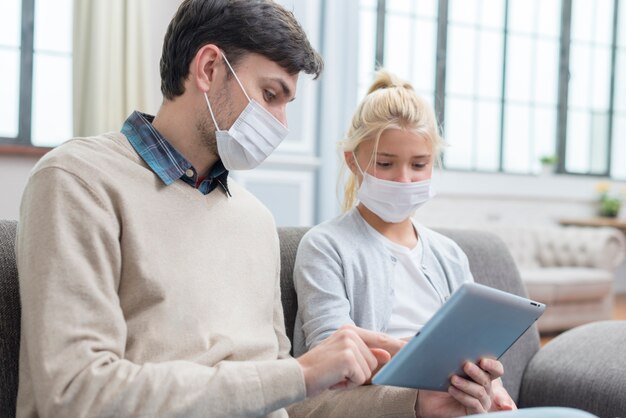
Before the COVID-19 pandemic, wearing a face mask was typically limited to those with serious respiratory illnesses or medical personnel. However, the outbreak has made face masks essential for everyone’s safety.
People now wonder if there’s a specific way to put on, take off, and dispose of masks to avoid the risk of infection. If that’s on your mind, you’re in the right place. Here, we’ll explain how to use a face mask for maximum protection and health benefits.
Different types of face masks are available, but the medical or surgical masks and N95 respirators are primarily for medical staff who deal with infected patients. For everyday use, medical masks and homemade masks are sufficient. But no matter what type you use, knowing the correct way to wear a mask is crucial for it to be effective.
Common Face Mask Mistakes and How to Avoid Them
Let’s start by addressing some common mistakes people make with face masks and how to avoid them.
Wash Your Hands Before and After Wearing a Mask
It’s not enough to wear a mask; your hands need to be clean too. People often touch the inside of their masks to adjust them, so wash your hands with soap and water for at least 20 seconds or use a sanitizer with at least 60% alcohol before putting on the mask. Always handle it by the ties to avoid touching the inside. Once on, avoid touching the mask, surfaces, or objects unnecessarily to prevent contamination. If you must adjust the mask, sanitize your hands first.
Ensure Full Coverage of Nose and Mouth
A mask only works if it covers your nose and mouth properly. These are the primary areas through which the virus can enter or exit. Make sure the mask fits snugly over the bridge of your nose and fully covers your mouth.
Make Sure the Mask Is Comfortable and Breathable
Your mask should be comfortable and allow you to breathe without difficulty. A well-fitting mask shouldn’t irritate you or leave gaps where air can escape. Too many gaps reduce its effectiveness because unfiltered air can pass around the mask.
Clean Your Cloth Face Mask Regularly
With the shortage of surgical masks, many people use cloth masks. These should be washed after each use. Use regular detergent and hot water if possible, and ensure the mask is completely dry before wearing it again. Store clean masks in a paper bag to keep them from getting contaminated.
Don’t Rely on Masks Alone
Masks are just one tool in preventing the spread of COVID-19. Social distancing and frequent hand washing are equally important. Sometimes masks and gloves create a false sense of security, leading people to take more risks. Always maintain a distance of at least 6 feet from others and avoid non-essential interactions.
How to Put on a Mask
1. Wash your hands for at least 20 seconds or use a sanitizer.
2. Inspect the mask for any defects.
3. Place the colored side facing out and the stiff edge at the top.
4. If your mask has ties, secure the upper ties first, then pinch the top edge around your nose.
5. Secure the lower ties and ensure the mask covers your nose and mouth completely.
6. Wash your hands again after putting on the mask.
How to Remove a Mask
1. Wash your hands before removing the mask.
2. Avoid touching the front of the mask.
3. Remove it by the ties or ear loops and dispose of it if it’s a disposable mask, or wash it if it’s a cloth mask.
4. Wash your hands again thoroughly.
By following these steps, you ensure maximum protection when using a face mask. Remember, masks are just a part of the prevention strategy. Combine them with social distancing and regular hand washing to stay safe.